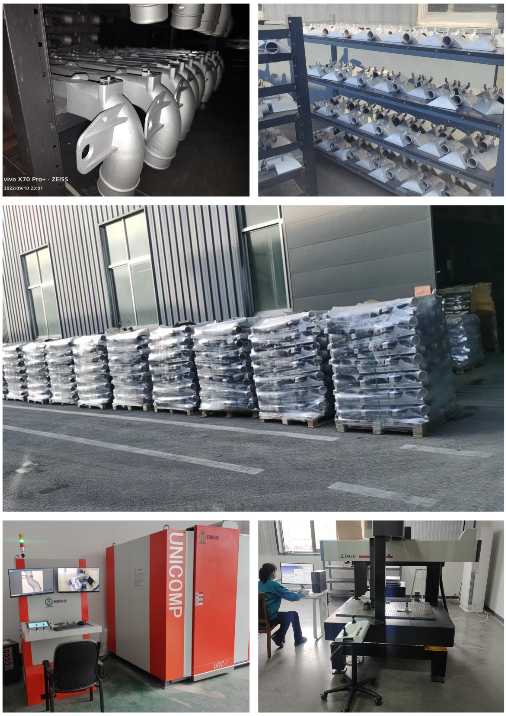Introduction
Aluminium is known for its lightweight, corrosion-resistant properties and versatility in a variety of applications. However, raw aluminium, in its pure form, may not always possess the strength or durability required for demanding environments. This is where heat treating aluminium comes into play. Heat treatment is a crucial process that can significantly improve the mechanical properties of aluminium alloys, making them more suitable for specific applications in industries such as aerospace, automotive, and manufacturing.
In this article, we’ll explore the heat treatment process for aluminium, its benefits, and how it can enhance the performance of your aluminium castings and parts.
What is Heat Treating Aluminium?
Heat treating is a controlled process used to alter the physical and sometimes chemical properties of aluminium alloys. It involves heating the material to a specific temperature and then cooling it at a controlled rate. The goal is to improve properties such as strength, hardness, and machinability.
In the context of aluminium casting, heat treating is often applied after the casting process to enhance the performance of the final product.
The Heat Treating Process for Aluminium Alloys
There are several types of heat treatments used for aluminium alloys. Each method is designed to achieve different mechanical properties depending on the requirements of the end product. The most common heat treating processes for aluminium include:
1. Solution Heat Treatment (Annealing)
Process: The aluminium is heated to a specific temperature (typically between 400°F to 950°F, depending on the alloy) and then rapidly cooled (usually by water quenching). This process helps to dissolve soluble elements in the alloy, making the material softer and easier to shape.
Benefits:
- Improves the material’s formability and machinability.
- Reduces internal stresses caused by casting or forming.
- Prepares the material for further treatment (like aging).
Applications: Annealing is commonly used for aluminium alloys that need to be soft and easy to work with, such as when creating intricate castings or parts that will undergo subsequent forming processes.
2. Age Hardening (Precipitation Hardening)
Process: This is a heat treatment process used to increase the strength of aluminium alloys. After solution heat treatment, the material is cooled and then aged at a lower temperature (typically between 300°F and 400°F) for a specific time. During this aging process, precipitates form within the metal, enhancing its strength and hardness.
Benefits:
- Increases the strength and hardness of aluminium alloys.
- Provides long-lasting performance in high-stress applications.
- Can be tailored to produce the desired mechanical properties depending on the alloy.
Applications: Age hardening is commonly used for aerospace, automotive, and high-performance industrial applications where high strength is critical.
3. T5 and T6 Heat Treatment (Artificial Aging)
Process: After solution heat treatment and quenching, T5 and T6 treatments involve artificial aging, where the alloy is heated to a lower temperature to further enhance strength and hardness. T6 is often the more widely used of the two, as it results in a significant improvement in strength.
Benefits:
- T6 treatment can significantly improve the yield strength of aluminium.
- The process increases the alloy’s ability to withstand mechanical stress and extreme temperatures.
Applications: Commonly used in manufacturing parts for the aerospace industry (e.g., aircraft components), automotive, and structural applications where high strength and durability are needed.
4. Stress Relieving
Process: Stress relieving involves heating the aluminium to a temperature below its recrystallization point (typically around 300°F to 400°F) and holding it for a short period. This process helps to relieve internal stresses caused by casting, welding, or machining.
Benefits:
- Reduces residual stresses from the casting or machining process.
- Helps prevent distortion and cracking during further processing.
- Improves dimensional stability.
Applications: This process is often used for aluminium parts that have been heavily machined or welded, as it helps improve their overall stability and durability.
Why Heat Treat Aluminium?
Heat treating aluminium alloys offers several key benefits, making it a vital process in many industries. Here are some of the top reasons why heat treatment is essential for aluminium parts:
1. Improved Strength and Durability
Aluminium alloys are often heat treated to improve their mechanical properties, such as strength, hardness, and resistance to fatigue. Heat-treated aluminium can withstand higher stresses and offer better performance in demanding environments, such as automotive engines or aircraft wings.
2. Enhanced Corrosion Resistance
While aluminium itself is naturally resistant to corrosion, heat treatment can further enhance this property. The right heat treatment process can improve the alloy’s resistance to oxidation and other forms of corrosion, especially in harsh environments like marine or industrial applications.
3. Increased Workability
Heat treatment can also make aluminium easier to form and machine. Processes like annealing soften the metal, allowing for easier shaping without compromising strength. This is particularly important in industries where intricate, high-precision parts are needed.
4. Tailored Properties for Specific Applications
Heat treatment provides manufacturers with the flexibility to tailor the properties of aluminium alloys to meet the specific needs of a given application. Whether it’s for a lightweight but strong automotive component or a high-performance aerospace part, heat treatment can optimize the material properties for each use case.
Applications of Heat Treated Aluminium in Various Industries
Heat-treated aluminium alloys are widely used across various industries. Here are some common applications:
1. Aerospace Industry
In aerospace, heat-treated aluminium alloys are used for structural components like wings, fuselages, and engine parts. The strength and weight ratio of heat-treated aluminium make it ideal for these demanding applications, where performance and safety are critical.
2. Automotive Industry
In the automotive sector, heat-treated aluminium alloys are used for engine components, transmission housings, wheels, and chassis parts. Heat treatment improves the strength and durability of these parts, ensuring they can withstand the high stress and temperature variations typical of automotive environments.
3. Marine Industry
Aluminium alloys are commonly used in the marine industry due to their excellent corrosion resistance. Heat-treated alloys, such as those used in boat hulls and offshore structures, offer enhanced protection against saltwater corrosion and provide the strength needed for critical structural components.
4. Manufacturing and Industrial Equipment
Heat-treated aluminium is also used in industrial equipment like machinery parts, heavy-duty pumps, and hydraulic components. The improved strength and resistance to wear make heat-treated aluminium an excellent choice for these high-performance, long-lasting applications.
Conclusion
Heat treating aluminium is an essential process for improving the mechanical properties and performance of aluminium alloys. Whether you need to enhance strength, improve corrosion resistance, or tailor the material for a specific application, heat treatment can provide the desired results. By understanding the different types of heat treatment processes, manufacturers can optimize their aluminium products for better performance, durability, and cost efficiency.
If your business requires high-quality, heat-treated aluminium parts, [Your Company Name] offers expert solutions tailored to your needs. Contact us today to learn more about our aluminium casting and heat treatment services.
Contact Us for High-Quality Aluminium Castings and Heat Treatment Services
Email Us for more information.

